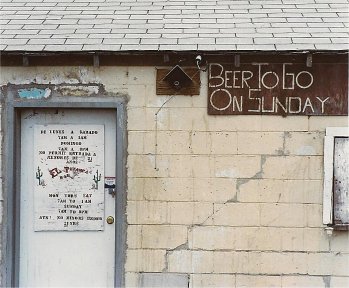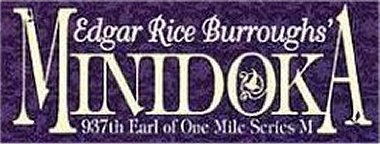
Comments on the "ERB
Country II" article by John Martin
By Andrew
 In reading some of your articles, it appears that you might be the kind
of person who would find the following content interesting. I had some
spare time and thought that writing a few interesting tidbits--inspired
by a single photo -- would be an enjoyable project for me to do. It does
seem that these "tidbits" have turned into somewhat of an article of its
own.
In reading some of your articles, it appears that you might be the kind
of person who would find the following content interesting. I had some
spare time and thought that writing a few interesting tidbits--inspired
by a single photo -- would be an enjoyable project for me to do. It does
seem that these "tidbits" have turned into somewhat of an article of its
own.
At any rate, I ran across your "ERB
County" article (Edgar Rice Burroughs Country by John Martin) while
re-researching the Burroughs/Sweetser efforts to dredge the Snake
River. I originally learned about from your website years earlier
while then researching Edgar's southern Idaho ties. What prompted that
research was that I had received a copy of the ERB's
'Minidoka' book. The book had aroused my curiosity as to why so
many locations that are familiar in this area were referenced. Once I learned
that he had spent time in this area it all made sense.
 Anyway,
when doing my research this morning, I nearly fell out of my chair when
I saw the accompanying photo. Apparently I had missed seeing it the first
time visited your website. Never in my life did I ever expect to see a
photo of that location -- yet alone in an article. The fact that someone
had made Minidoka a destination location while on vacation is almost
equally as surprising to me. Though, I guess if one had never been there
how would they know there isn't much there. (Though it sounds like
something I would do). You would have been better off to go to Albion.
It's a very nice little town right at the base of Mount Harrison.
Anyway,
when doing my research this morning, I nearly fell out of my chair when
I saw the accompanying photo. Apparently I had missed seeing it the first
time visited your website. Never in my life did I ever expect to see a
photo of that location -- yet alone in an article. The fact that someone
had made Minidoka a destination location while on vacation is almost
equally as surprising to me. Though, I guess if one had never been there
how would they know there isn't much there. (Though it sounds like
something I would do). You would have been better off to go to Albion.
It's a very nice little town right at the base of Mount Harrison.
I have a ton of great memories of Minidoka. I lived the first
six and a half years of my life either in, or within a couple of miles
of Minidoka. Actually, about four of those six and a half years
I lived within a half block of the location in the photo. When I lived
there it was a quaint, clean, and well kept little town. Then, an ideal
location to grow-up. Unfortunately, now it's not much more than a modern
day ghost town deteriorating by the year. There is some interesting history
there however. It is said that the town of Minidoka once had a population
of around 5000. This, I think, would have been around the turn of the century
-- when ERB was roaming the area. I'm not sure when, but a fire pretty
much wiped out the entire original town. The official population of the
town when I lived there was 99. I still remember the sign as you crossed
the railroad tracks as you came into town.
The above photo is of the front of what was once called "Vern's Bar"
-- Verne was my dad. (If I remember correctly, the second 'E' of his name
was left off of the sign that hung on the west side of the building --
don't know if the sign would have been there at the time of your visit.)
In the mid 1960s my dad decided to quit farming and go into the saloon
business. He had run the other bar in town for a year, on lease. That bar
and cafe was then called the Depot bar and Grill (this is "building
that appeared to be a store" in your article -- and there was a store too
-- but he didn't run it). That bar had a definite old west "saloon"
feel to it. It was just across the street form the UP railroad depot
(which had probably been torn down by the time of your visit). He then
decided to buy the vacant building at the location of the photo and turn
it in to a bar of his own (1968 or 69). That vacant cinder block building
had previously been an Assembly of God church. The fact that my
dad was going to turn a former "house of worship" into a bar somewhat disturbed
my mother -- who was the daughter of a minister -- but that's what he did
and I guess she got over it. I remember when he was doing the renovation
work, I would "help" (I was only 2 or 3 at the most) by picking up nails
and wood scrap, etc. After the bar was opened, I would sneak over often
to see my dad often, much to the dissatisfaction of my mother (I was supposed
to be playing in the yard -- which was fenced/gated -- but I got out anyway)
but my dad seemed to enjoy my visits. I spent hours in that place, but
only when it was not too busy.
By the time I was six and a half, my mother had enough of Minidoka
(she hated the location and the town in general, and I don't think the
bar was much of a financial success) and she finally convinced my dad to
move into Rupert (Jan. 1973). At that point he started leasing the
bar to various people which pretty much ran it only during the farming
months as Hispanic seasonal laborers were the primary patrons. This was
the case when you snapped the photo. At some point after I had left the
area, he sold the building -- I'm not even sure when (late '90s maybe).
I moved back to the area seven years ago and still go to/through Minidoka
frequently. Whoever purchased "Verne's Bar" renovated it into a
house. I went through Minidoka just a few weeks ago and noticed a "for
sale" sign in front of it. Interested? I'm sure the asking price isn't
too high.
As for the "Beer To Go On Sunday" sign: My dad is who either
painted or had that "interesting" sign painted. The story behind it is
that there used to be a county ordinance (in both Minidoka and Cassia
counties) that bars could not be open on Sunday nor could stores in
any nearby towns sell beer on Sunday. But city ordinances in Minidoka
and Declo allowed them to sell beer "to go" on Sunday. This was
done through a drive through window (partially shown to the right in the
photo) as the doors to the establishment had to remain locked. If people
in the area wanted beer for Sunday they had to either plan ahead or make
a Sunday trip to Minidoka or Declo. The ordinance was changed
20+ years ago and bars can now be open on Sunday.
One interesting bit of more recent (and perhaps ugly) Minidoka
history took place nearly exactly where you must have been standing to
take the photo (or at least the event took place well with in the span
of the photo). I think it was in the mid 1980s. I know it took place at
approximately 8 o'clock on a Sunday morning. Two men apparently had a showdown
reminiscent of the old west days -- or at least that's how the story is
told. I don't know that it was a "fast draw" type of show-down, but both
men did point guns at each other and fired. In a way, it almost sounded
like a duel. One man was killed and I'm not sure what happened to the other.
I don't know that he was ever caught -- my guess would be that he fled
back to Mexico. Apparently, the two men were members of rival families
in the Mexican Mafia.
Unfortunately, my only real awareness of ERB's time in southern Idaho
comes mainly from information gleaned from your website and couple other
websites. I, personally, have very little information about ERB that
comes from local sources. Most people around here are unaware of his ties
to the area. However, I intend to further research his presence here
as it is an interesting subject to me, at least ever since I received his
'Minidoka' book (several years ago). The places referenced in this
book are what made me realize that he had a history in the area.
Consequently, I was drawn to research the subject.
One project I thought would be interesting would be to put current-day
photos to the many (at least 8 to 10+) places mentioned in ERB's Minidoka,
937th Earl of One Mile Series M. It would definitely be a spring/summer
project though. This is because southern Idaho this time of year is one
of two colors -- brown or white -- the photos might all look alike.
Here are a couple corrections of erroneous content in your article.
>>>Minidoka is in Minidoka County, a county separated from its neighbor,
Cassia County, by Interstate 84.<<<
Actually, the border between Minidoka and Cassia counties is the Snake
River.
>>>Minidoka had a more dubious claim to fame during World War II.
It was the site of one of the camps in which the U. S. government interned
Japanese Americans.<<<
The Minidoka Internment Camp only shared the name with the town and
county. The Minidoka internment camp was actually 30-40 or so miles southwest
of Minidoka. It was actually in Jerome County just north of a town called
Eden. I don't know why they named the internment camp as they did.



 Anyway,
when doing my research this morning, I nearly fell out of my chair when
I saw the accompanying photo. Apparently I had missed seeing it the first
time visited your website. Never in my life did I ever expect to see a
photo of that location -- yet alone in an article. The fact that someone
had made Minidoka a destination location while on vacation is almost
equally as surprising to me. Though, I guess if one had never been there
how would they know there isn't much there. (Though it sounds like
something I would do). You would have been better off to go to Albion.
It's a very nice little town right at the base of Mount Harrison.
Anyway,
when doing my research this morning, I nearly fell out of my chair when
I saw the accompanying photo. Apparently I had missed seeing it the first
time visited your website. Never in my life did I ever expect to see a
photo of that location -- yet alone in an article. The fact that someone
had made Minidoka a destination location while on vacation is almost
equally as surprising to me. Though, I guess if one had never been there
how would they know there isn't much there. (Though it sounds like
something I would do). You would have been better off to go to Albion.
It's a very nice little town right at the base of Mount Harrison.
